Homemade Asian Stir Fry Sauce
This oil-free Asian stir fry sauce is the perfect blend of savory, sweet, and tangy flavors, ideal for adding a punch of flavor to your favorite vegetables, noodles, or rice. Quick to make and versatile, it’s a must-have sauce for easy, delicious weeknight stir-fries!
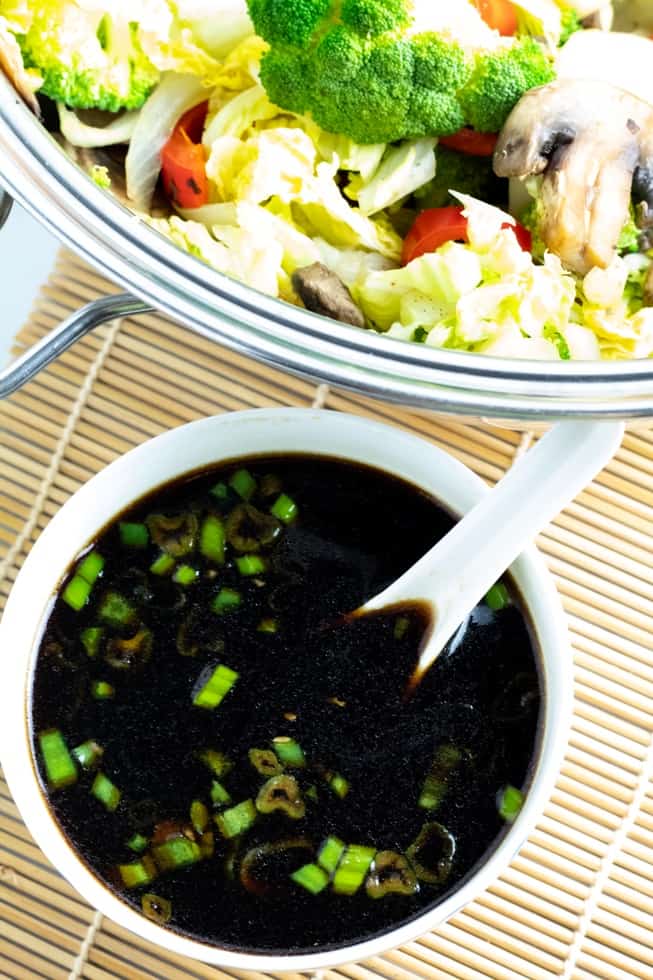
About 30 years ago, a Japanese friend taught me how to whip this healthy stir-fry sauce up for a lot of the dishes he prepared like vegetable gyoza. He mostly used it as a dipping sauce, but I have found so many more uses for it over the years like seasoning these Asian green beans.
If you love Asian sauces as I do, also try our miso-ginger sauce on veggie poke bowls, vegan sushi, and even steamed vegetables. Also, be sure to try my easy vegan miso sauce too because it’s good on everything!
Reasons you will love this sauce
- Bursting with Flavor: This Asian stir fry sauce combines savory, sweet, and tangy elements, creating a deliciously balanced sauce that elevates any dish.
- Quick and Easy to Make: Ready in just minutes, this stir fry sauce is perfect for busy weeknights when you need a fast and flavorful meal.
- Versatile and Customizable: Whether you’re cooking veggies, tofu, noodles, or rice, this sauce pairs perfectly with a variety of ingredients and can be adjusted to suit your taste.
Ingredients you will need

- Soy sauce- Or tamari is used in Asian stir fry sauce to add a rich, umami flavor that forms the savory base of the sauce. Soy sauce provides depth and saltiness, while tamari offers a gluten-free alternative with a similarly bold taste, making it essential for creating a balanced, flavorful stir fry.
- Lemon juice- Adds a bright, tangy acidity to Asian stir fry sauce, balancing the richness of soy sauce and other savory ingredients. It enhances the overall flavor by providing a refreshing citrus kick, making the sauce more vibrant and well-rounded.
- Sweetener- Using a sweetener like sugar or maple syrup in Asian stir fry sauce helps balance the salty and tangy flavors, creating a harmonious blend of sweet and savory
- Garlic- Its natural pungency complements the other ingredients, making the sauce more flavorful and adding a deliciously fragrant element to your stir-fries.
- Thickener- Arrowroot powder or cornstarch is used in Asian stir fry sauce to thicken it, creating a silky, glossy texture that clings to vegetables, noodles, or proteins.
Tips for use as a dipping sauce
- Dipping Sauce- When using it as a dipping sauce, we sometimes use it as is (without the thickener), but it can also be thickened up to have more of a gravy texture.
- Thicken- To thicken it for dips, simply add arrowroot powder and simmer or microwave for just a minute. Cornstarch can also be used as a thickener, just be sure to stir constantly during the heating process to reduce lumps.
How to make Asian stir fry sauce
The recipe card at the bottom of the page has the full list of ingredients with measurements and instructions.

STEP #1: Place all ingredients in a bowl and whisk together. Be sure that the arrowroot powder or cornstarch gets incorporated well without any clumps.

STEP #2: Pour into stir-fries AFTER the veggies are finished (or nearly finished) cooking. This sauce begins to thicken as soon as it is heated in the pan, so you want to add it last. To stop the thickening process, remove it from the heat.
Use as a marinade
We also use this sauce as a marinade for tofu and in recipes like these veggie kabobs. When using it as a marinade, you’ll want to leave out the thickener during the marinating process.
It used to be such a waste with the marinades we used with meat that had to be thrown out after the marination process because of being in contact with raw meat.
Nowadays, after marinating, we can use the same sauce for a healthy dipping sauce or even turn it into a gravy by adding thickener. So much healthier! See the thickening instructions above.
*Originally published January 22, 2015.
Frequently Asked Questions
Yes, to make it gluten-free, simply use tamari or a gluten-free soy sauce alternative, as well as arrowroot powder instead of flour for thickening.
You can thicken the sauce by mixing a small amount of cornstarch or arrowroot powder with water to create a slurry, then adding it to the sauce while cooking. It will thicken as it heats up.
Absolutely! You can adjust the sweetness by adding more or less sugar, maple syrup, or your preferred sweetener to suit your taste preferences.
It can be stored in an airtight container in the refrigerator for up to 5-7 days. Shake or stir before using if separation occurs.
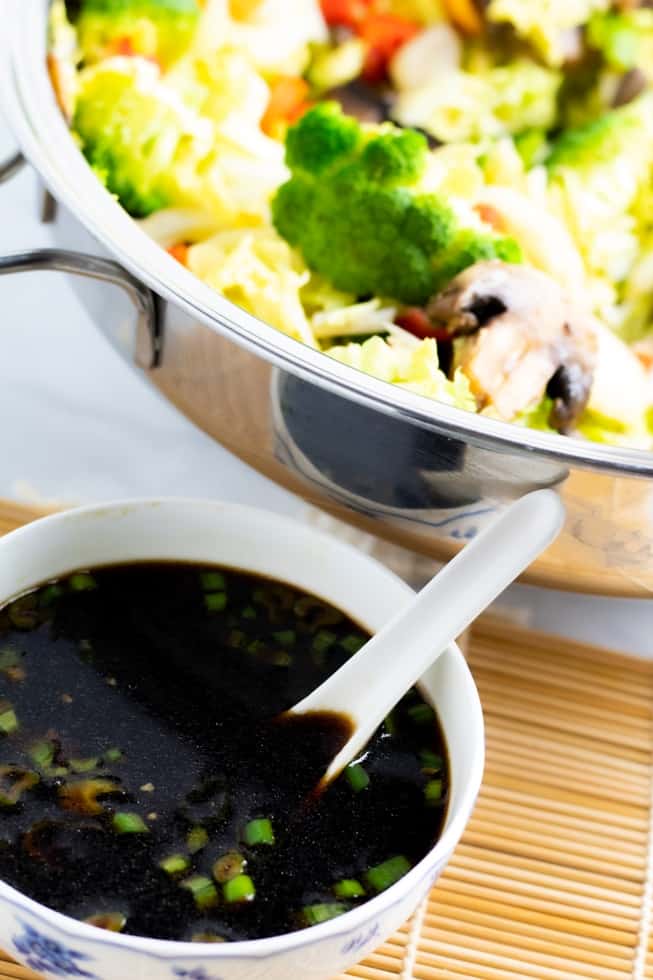
For those of you new to the whole food plant-based lifestyle, we’ve created a FREE 7-Day Plant-Based Menu Planner to help you get started!
If you try this recipe, please let us know how you like it by rating it and leaving a comment. We love to hear from you!
Want to Save This Recipe?
Enter your email & I'll send it to your inbox. Plus, get great new recipes from me every week!
By submitting this form, you consent to receive emails from EatPlant-Based
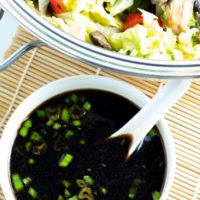
Asian Stir Fry Sauce
Ingredients
- ¼ cup low sodium Tamari or soy sauce
- ¼ cup water
- 1 tablespoon lemon juice
- ½ tablespoon sugar pure cane, date, maple, sucanat, or others
- 1 teaspoon minced garlic I use kind from jar
- fresh chives optional
- 2-3 tablespoons arrowroow powder cornstarch, or other thickener
Instructions
- Place all ingredients in a bowl and whisk together. Be sure that the arrowroot powder or cornstarch gets incorporated well without any clumps.
- Pour into stir-fries AFTER the veggies are finished (or nearly finished) cooking.
- This sauce begins to thicken as soon as it is heated in the pan, so you want to add it last.
- To stop the thickening process, remove it from the heat.
Video
Notes
Nutrition
Disclaimer
To obtain the most accurate representation of the nutritional information in a given recipe, you should calculate the nutritional information with the actual ingredients used in your recipe, using your preferred nutrition calculator. You are solely responsible for ensuring that any nutritional information provided is accurate, complete, and useful.

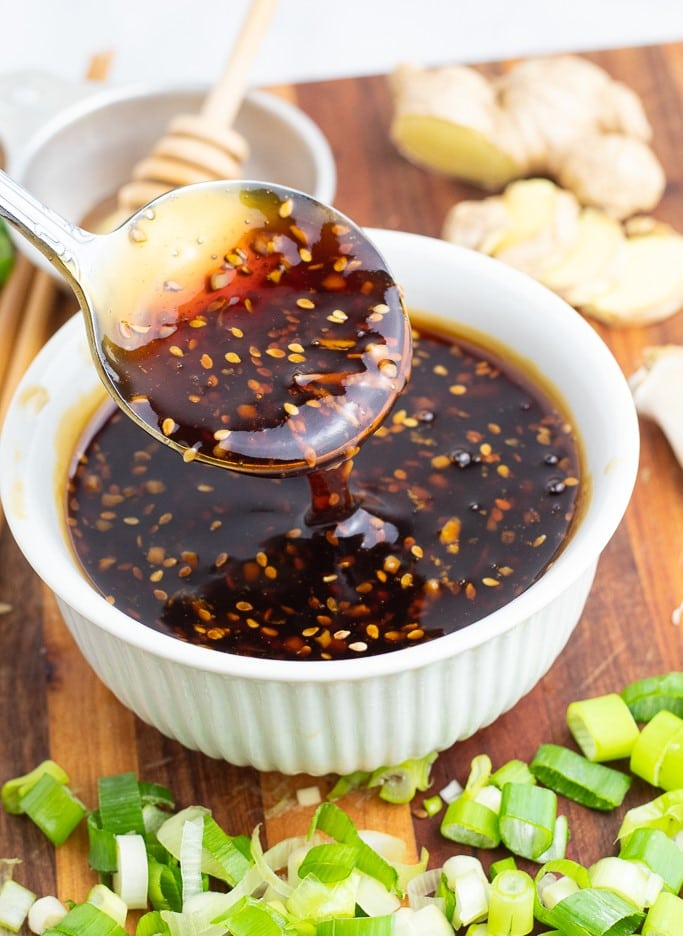
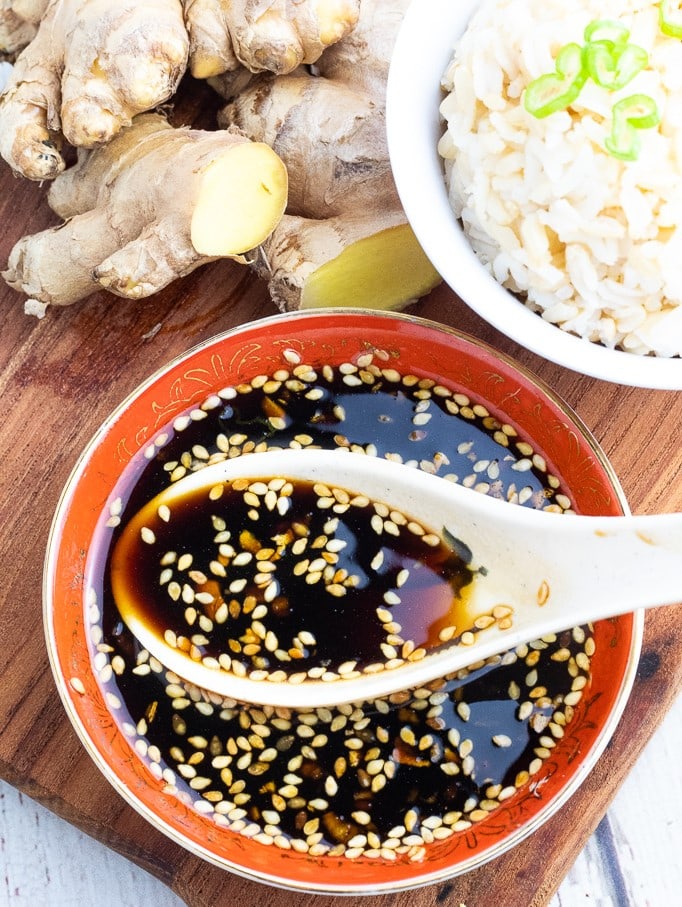
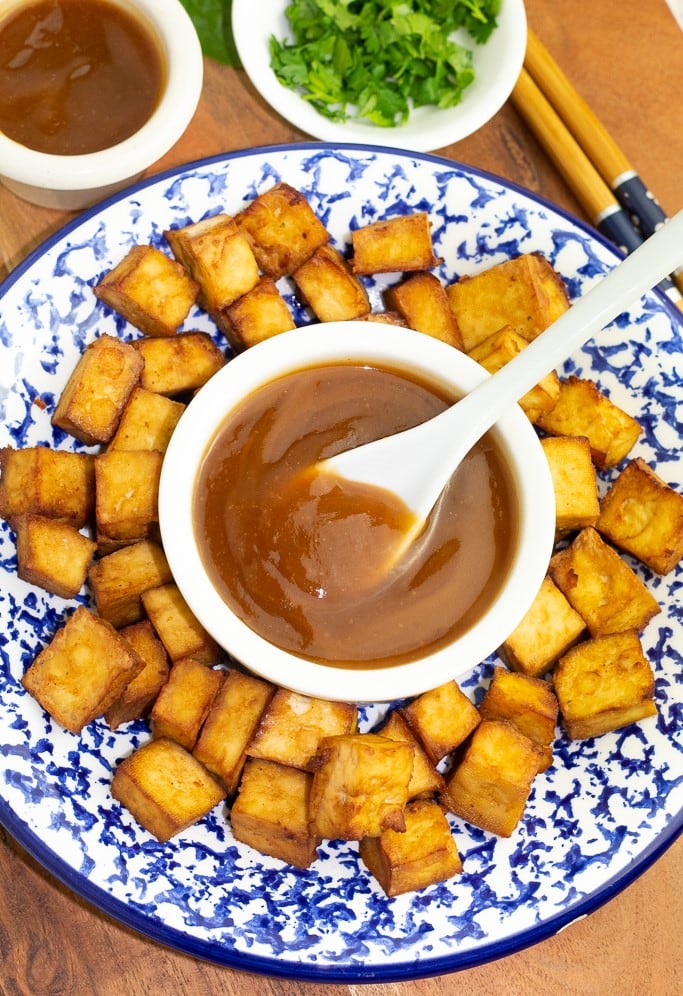
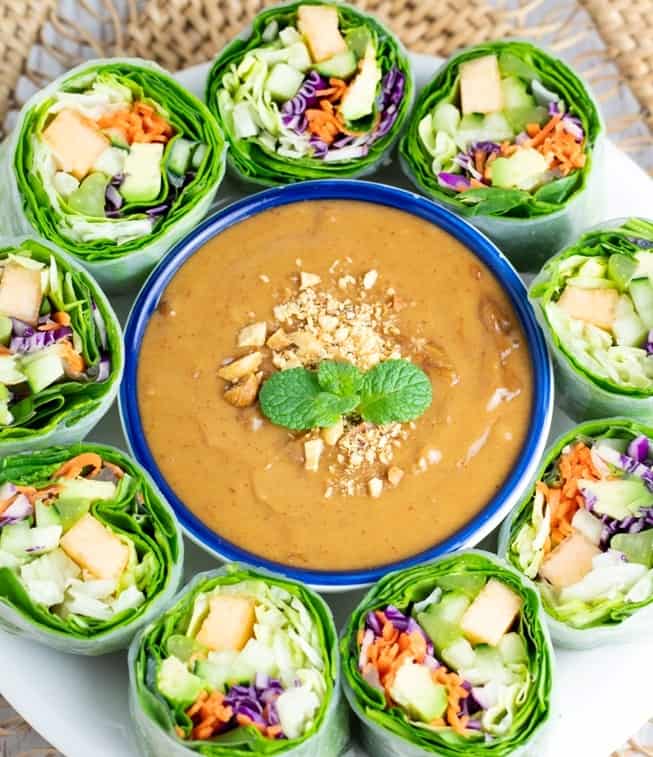
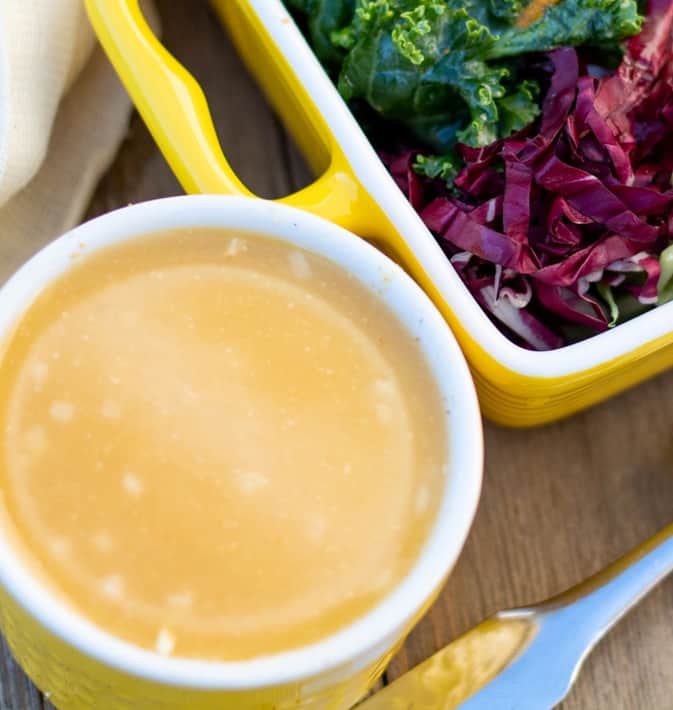

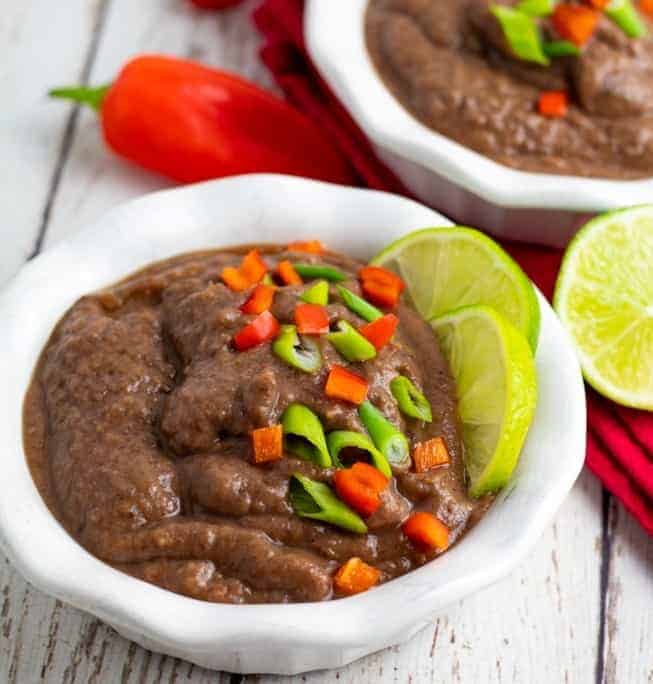

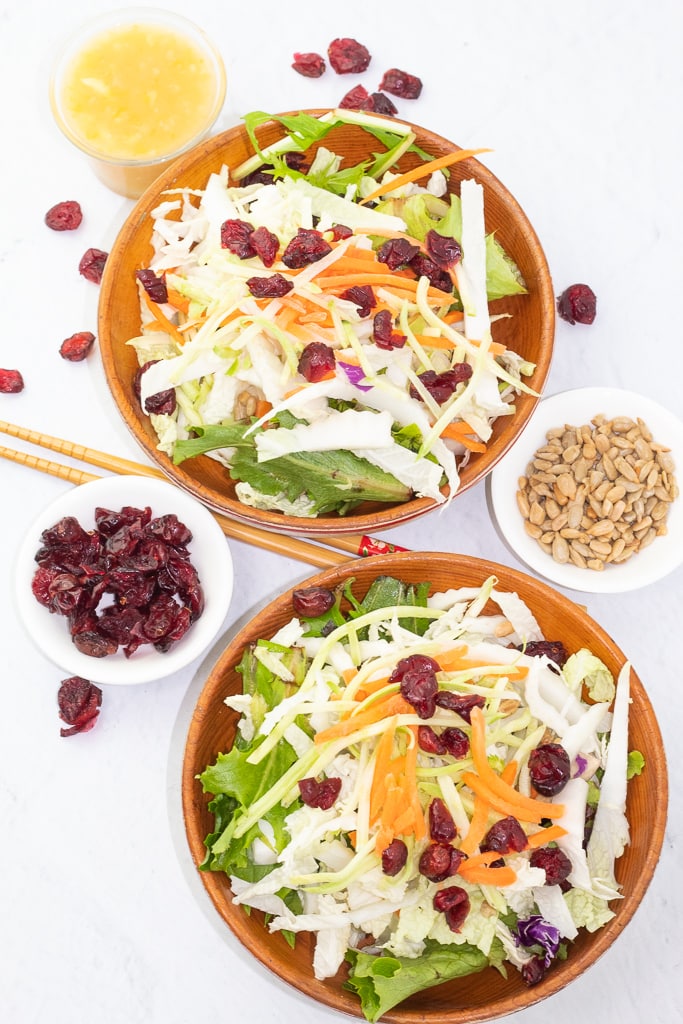

Tamari and lemon juice sound like a great combination. Thanks so much
I’ve made this twice so far because it is so good. I added some black beans the last time and put it over rice for a complete meal. Highly recommend.
Hi Katheryn- What a great idea! I love the way you think with rice and beans. I happen to love them and eat that combo for lunch many days. I’ll have to try them with this Asian sauce next time.
Asian Sauce–
¼ cup Tamari or soy sauce (make sure gluten-free, if needed)
¼ cup water
1 Tbsp lemon juice
½ Tbsp sugar (I use an unrefined sugar called sucanat)
1 tsp. minced garlic (I use kind from jar)
fresh chives (optional)
Arrowroot powder to thicken (if desired)
Whisk all ingredients in bowl.
I use this sauce with a lot of dishes including as a dip, topping for pasta, Asian Green Beans, a marinate for grilling, and much more. If you would like to thicken, add the arrowroot powder and simmer for just a minute.